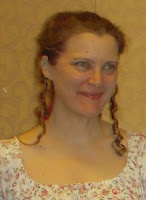 I’m working on revisions for my next book, the first in my soldiers trilogy. Revisions always come with unique challenges and one of mine is to discover if my hero needed an invitation to visit The Green Room of Drury Lane Theatre.
I’m working on revisions for my next book, the first in my soldiers trilogy. Revisions always come with unique challenges and one of mine is to discover if my hero needed an invitation to visit The Green Room of Drury Lane Theatre.
“What” you are asking, “Does Drury Lane Theatre and the Green Room have to do with three soldiers?”
Nevermind…..you’ll find out later…when the book is out.
The Green Room is the backstage room in a theatre where the actors can lounge while not on stage and where certain people can visit after the performance. In Regency Romance we know it mainly as the place where gentlemen pick up actresses and ballet dancers. My question was–did gentlemen gain entrance to the Green Room by invitation or could anyone come in?
Here’s how I tackled finding the answer.
First I Googled “Green Room English Theatre”
I found out from this that the Green Room is not necessarily painted green and that there are all sorts of theories as to why it is called the Green Room. My favorite was, “Sitting in a totally green room before a performance, however, was believed to ward off the powers of this evil colour.” (ArtsAlove.com)
I googled around some more, adding “19th century” or “18th century” but I didn’t learn much more than the warding off evil thing.
My next strategy was to search in Google Books. Here I had more luck. This snippet came from The London Magazine, Jan Jun 1822
“…Not that I dislike Macready —but I never saw any picture so expressive as the fine countenance of Kean, when he is addressing you on dramatic subjects. Don’t you think so ? But oh I true—you never saw him in a room—you should go to the Green-Room with Tom, for he has the entre at all the houses—I wonder why they call it a Green-Room—for Tom says it is not green.”
The word entre gave me a clue that not just anyone could get in, but it wasn’t a very strong clue.
 This from Life in London by Pierce Egan (and illustrated by Cruikshank):
This from Life in London by Pierce Egan (and illustrated by Cruikshank):
“Where shall we go this evening?” said HAWTHORN to his Coz. “Apropos,” replied the CORINTHIAN, ” I have the offer of an introduction to the performers in the Green-Room of Drury-Lane Theatre.” “Excellent,” exclaimed JERRY; “it is DON GIOVANNI to-night, and the numerous characters that piece contains will afford us plenty of fun!”
Offer of an introduction….another clue.
I also looked at the links provided on the Beau Monde website, poked around in my research books, and even asked on the Beau Monde loop.
Then I had a really great idea.
 I asked Cara.
I asked Cara.
Her reply:
” All I can say is that in the new 1811 Drury Lane, there were two (at least two) green rooms, both (if I read the diagram correctly) on the ground floor, which was either the same level as the stage, or one below. In “Mrs Jordan’s Profession,” about Drury Lane sometime in the 18th C, it says “at Drury Lane visits to the green room — the actors’ common room — could not be made merely at whim; special passes had to be agreed and provided by the management.” Then again, I have no idea if this later changed; also, my feeling is that in the “shared world” of Regency romances, one does not need a pass for the green room! (FWIW, in Gamester, I had the H&Hs younger brothers go to the green room during an interval…and surely they had no pass! Then again, one of them is wealthy and high-ranking, and the other sneaky, so I’m not sure it would have stopped them…)”
One of the members of the Beau Monde (the only one who answered my question) also thought that invitations were not required for the Green Room.
Sigh!
The way I see it, I still don’t have a strong, clear answer to my question. You’ll see how I solve this problem when the book is published! I still don’t know.
What do you think? Do I have enough evidence to keep my respectable soldier, but not a gentleman, out of the Green Room?
What do you do when you don’t have the answer to a research question and you have to get the book done?
Diane’s website is being updated today. Take a look! dianegaston.com
The theme for February on the Wet Noodle Posse Blog is Isn’t It Romantic? Come and see.














